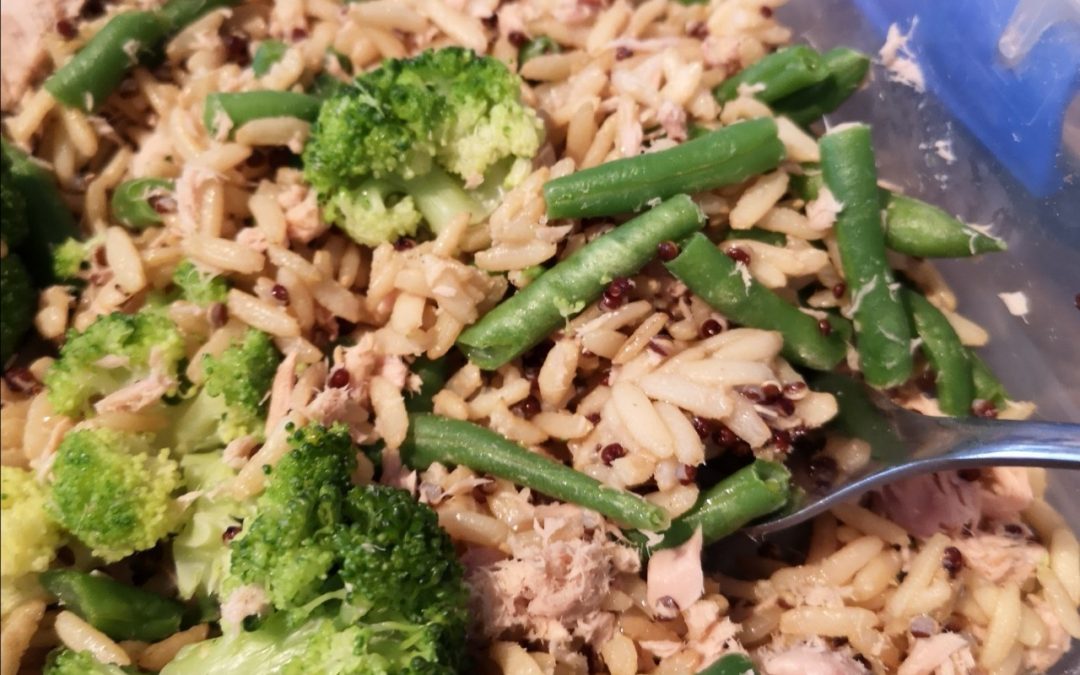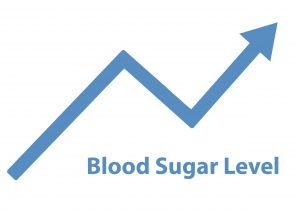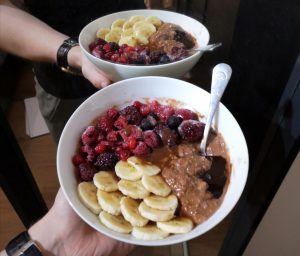Fibre is one of those nutrients that we all know is good for us… But we don’t really know what it actually is, why it’s good for us, or how much we should be eating (versus how much we actually are eating).
Fibre is a type of carbohydrate that can’t be digested by the body and comes in two forms: soluble, and insoluble.
Regular carbohydrates are broken down into sugar for energy, but instead, fibre passes through the body undigested.
This helps to regulate the body’s blood sugar and hunger levels, among other things detailed below.
The recommended daily allowance (RDA) of fibre is 30g per day for men, and 25g for women.
However, the average adult consumes less than 15g per day – half of what they should be!
Benefits:
Aids weight loss
A huge benefit of eating more fibre is how it aids weight loss. The way it does this is through helping to regulate hunger.
There are several ways which it does this;
Foods which are high in fibre are generally low calorie and high volume, meaning that you will feel more full from eating less. As the fibre consumed in these foods isn’t digested by the body, the calories are kept even lower!
Also, fibre holds onto water. This means that after a meal consisting of a lot of fibre, having a glass of water will suddenly make you feel very full. This is the effect that fibre can have when paired with a liquid.
The increase in fullness will prevent you from wanting to eat more, thus helping you towards a goal of weight loss.
Bowel health
As many people are aware, a big part of fibres benefit is maintaining and regulating bowel health.
As it is not digestible by the body, it can pass through easily and acts as a way to clean out much of the bacteria inside your body.
It is possible that a high-fibre diet can lower your risk of developing haemorrhoids and also small pouches in your colon called diverticular disease.
Studies have also found that a high-fibre diet likely lowers the risk of colorectal cancer.
Heart health
Soluble fibre found in beans, oats, flaxseed, and oat bran has been shown to lower cholesterol levels by reducing the levels of “bad” lipoprotein cholesterol.
Other heart health benefits such as reduced blood pressure and inflammation have also been associated to increased fibre intake.
A high-fibre diet can reduce the risk of developing type 2 diabetes when paired with a healthy diet and lifestyle.
Blood sugar
All types of fibre help to control and maintain healthy bloody sugar levels for people with diabetes. Soluble forms of fibre such as those mentioned above are particularly good for this.
As fibre is not broken down by your body, it does not raise blood glucose levels and will also slow down the absorption of sugar into the blood, therefore reducing the spike you’d get from something sugary.
Gut health
Another hugely important benefit of fibre intake is the improvement and maintenance of the microbiome of your gut.
The bacteria within your gut is very important, and these bacteria feed on the fibre within your diet. This allows the number of bacteria to grow and therefore strengthening the barrier between the body and the gut.
This will reduce inflammation throughout the body, and greatly aid in digestion which is of huge importance in your day-to-day life.
Furthermore, recent studies and research have begun to discover new potential benefits.
One investigation discovered that increasing fibre intake within a diet may trigger a shift from a microbial profile linked to obesity to one correlated with a leaner physique.
Another study showed that a lack of fibre in a diet can possibly cause the gut bacteria to feed on the protective lining of the gut, triggering inflammation and disease.
Best Sources of Fibre
The reason that the majority of people are under-consuming on fibre is because unfortunately, it can be quite hard to get in.
With the changing dietary habits towards more processed foods, you need to be more aware and make conscious decisions which will work towards your goals.
With this in mind, there are some food choices that will make it far, far easier to do so – while still tasting great!
Some of your best fibre options are as follows.
Whole grain products
- 60g Oats – 6g Fibre
- 40g Bran Flakes – 6.7g Fibre
- 75g Whole-Wheat Spaghetti – 6.8g Fibre
Fruits
- 200g Blueberries – 4.8g Fibre
- 200g Raspberries – 12g Fibre
- 1 Large Apple – 5g Fibre
Vegetables
- 100g Green Peas – 6g Fibre
- 100g Broccoli – 2.6g Fibre
- 100g Spinach – 2.2g Fibre
Legumes
- 100g Kidney Beans – 6.4g Fibre
- 100g Edamame – 5.2g Fibre
- 100g Baked Beans – 5.5g Fibre
As you can see, a few of these thrown into your diet each day will quickly add up to your RDA of fibre – notice that raspberries have 12g per 200g!
So, are you hitting your daily fibre needs?
If you have any questions on the above or general nutrition feel free to contact me on ash@upfrontnutrition.co.uk, visit my website www.upfrontnutrition.co.uk, or grab me in the gym for a chat!
Ash



